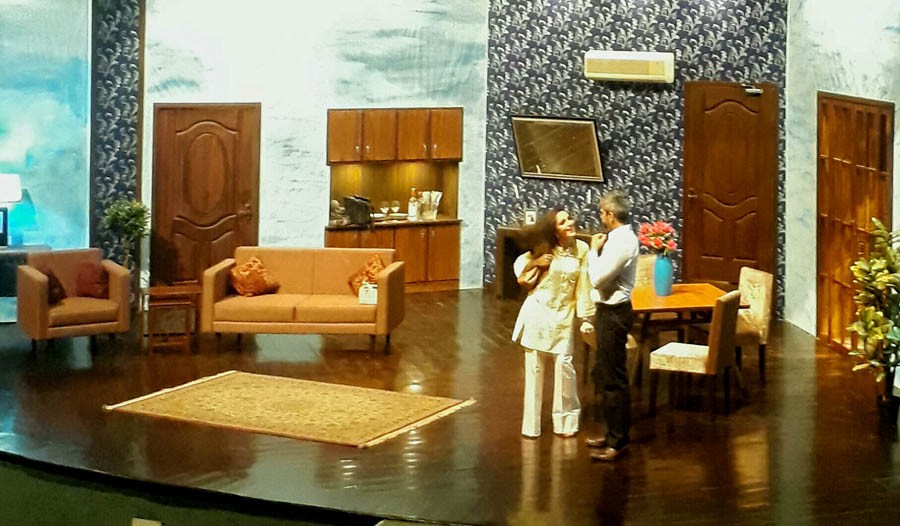
Neil Simon’s American comedy is adapted into Urdu and repackaged with contemporary ‘desi’ jokes, in Dil e Nadaan

American dramatist and screenwriter Neil Simon’s comedy The Last of the Red Hot Lovers hit Lahore’s theatre scene this week as Dil e Nadaan. Adapted into Urdu by Jawwad Daud and produced by the Lahore Amateur Theatre Zealots (LATZ), it had seasoned actors Omair Rana and Nadia Afghan amongst the small cast. Rana had a dual contribution to the play: as the director and as the lead character, Yawar.
The plot revolves around one man, and the setting of the play is also one room where the action is spread over a course of time. A blue-hued living room with décor symbolising affluence is the centre of activity. The amateur theatre company must be applauded for being able to construct a very realistic set. It was a straightforward production and, accordingly, the lighting and sound were kept simple. There were no dramatic changes in lighting and the soundtrack comprised a couple of popular Bollywood songs, the best-known being Rahat Fateh Ali Khan’s ‘Dil toh bacha hai ji’.
Rahat’s melodious jibe at ‘Age’ sums up the theme of the play. The story revolves around a middle-aged man attempting to liven up his life with an extramarital affair. For Yawar, having an affair is the supposed answer to his mid-life crisis. But the quandary lies in his inability to convince himself. Appearing to be a simpleton and a lech by turns, Yawar is caught in an existential crisis, a confession that he makes during the first act.
The dialogue exchange of the better part of the first two acts was unfortunately lost on the audience due to low acoustics, which is a shame as the female actors in the first two acts were as good as the more experienced Nadia Afghan who came on stage in the final act. All three actors relied on exaggerated gestures and intonations, something that only served to turn their characters into a foil for Rana’s Yawar, who continued to speak in more measured and subdued tones.
The Punjabi-speaking character of Yawar with his desi tastes and fish ‘dhaba’ was the star of the play. Omair Rana’s subtle transition from a bumbling and nervous man in the first Act to a more suave and confident flirt in the third Act was commendable. His Yawar is also the main source of comic relief in the play, his constant nervous gestures providing amusement.
Much like its conflicted protagonist Yawar, the overall impression was of a theatrical production suffering from a case of confusion. Inspired by Simon’s acclaimed play, Dil e Nadaan failed to elicit much laughter. The effect of the few jokes that did manage to amuse the audience was erased by the depressive social commentary by all the characters in every act.
On the other hand, the introspective exchanges created a strong impact and bode well for the cast’s ability to handle more serious material in their future endeavours.
The biggest complaint was the length of the play. A much-shortened version might receive more appreciation from the audience. The long gaps between the Acts with the curtains open on a darkened stage with Bollywood songs playing certainly did not help maintain the tempo.
This play about unhappy and disillusioned people and a world devoid of sincerity was an ambitious undertaking. The cast and crew made a good attempt to portray the metaphorical stink that pervades modern society but the hype surrounding the play probably led to higher expectations than the actual production was able to fulfill.